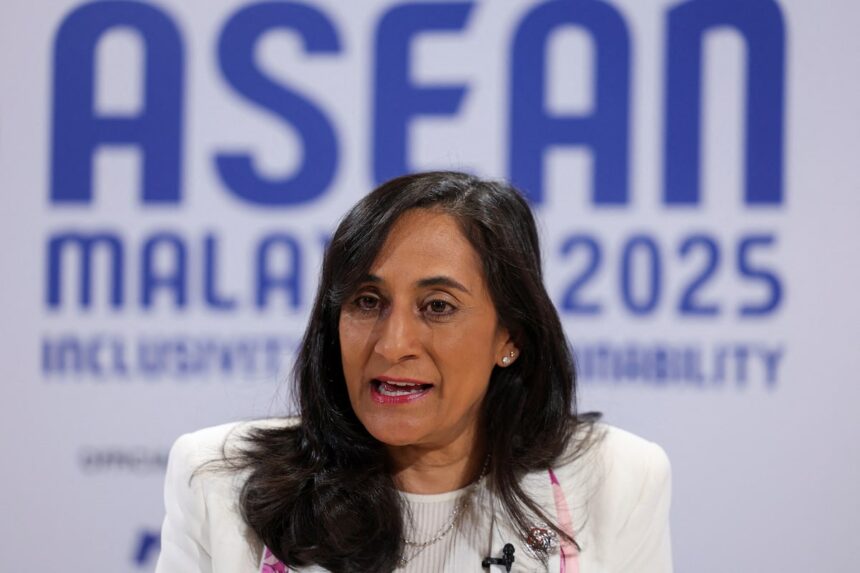I still remember the frigid January morning in Montreal when Canada joined the original Trans-Pacific Partnership negotiations. Back then, in 2018, I was covering the emergency talks after the U.S. had already withdrawn under Trump’s direction. The atmosphere among trade officials was tense but determined—a stark contrast to the mood I encountered last week in Ottawa, where anxiety has replaced resolve.
“We’ve seen this movie before,” Chrystia Freeland, Canada’s Deputy Prime Minister, told me during an interview at her Parliament Hill office. “But this sequel comes with higher stakes and fewer escape routes.”
Trump’s promised 10% blanket tariff on Canadian imports—potentially rising to 25% on automobiles—represents more than just bilateral tension. It signals a fundamental restructuring of North American trade that’s already sending ripples across the Pacific.
I’ve spent the past decade tracking how U.S. trade policy reshapes global commerce. This latest development suggests something more systemic than the typical four-year policy pendulum. During three days of meetings with Canadian officials, Asian diplomats, and economic analysts, a concerning picture emerged of how Trump’s proposed tariffs could accelerate a fracturing of global trade into competing blocs.
The Bank of Canada estimates these tariffs could slash Canadian exports to the U.S. by up to 15% within a year, potentially triggering a recession in Canada’s export-dependent economy. What’s receiving less attention is how this North American trade disruption creates both peril and opportunity for Asian economies.
“This creates immediate arbitrage opportunities for countries with existing U.S. trade agreements,” explained Park Min-ho, South Korea’s trade attaché in Ottawa. “Korean manufacturers are already exploring how to increase Canadian sourcing to potentially circumvent direct U.S. tariffs.”
Such triangular trade strategies might offer temporary advantages for some Asian exporters, but the broader implications worry regional stability experts. The Peterson Institute for International Economics projects that widespread U.S. tariffs could reduce global trade volumes by 8-12% over two years, with particularly severe impacts on integrated supply chains across East and Southeast Asia.
In Hanoi last month, I witnessed Vietnamese electronics manufacturers already pivoting away from their traditional role in North American supply chains. “We are accelerating our integration with regional partners instead,” said Nguyen Van Thanh, operations director at a major component supplier outside Hanoi. “The RCEP framework gives us more predictability than dealing with American policy shifts.”
The Regional Comprehensive Economic Partnership (RCEP)—the world’s largest trade agreement, encompassing China, Japan, South Korea, Australia, New Zealand, and ASEAN nations—represents precisely the kind of alternative economic architecture that gains momentum when U.S. trade policy turns inward.
Canada finds itself caught in a particularly vulnerable position. With 75% of its exports heading to the U.S., its economy lacks the flexibility that some Asian trading partners have developed since the first Trump administration.
“Unlike Japan, which diversified substantially after 2018, Canada remains dangerously exposed to U.S. market access,” noted Catherine Bérubé from the C.D. Howe Institute. “The geography is unalterable, but the policy response isn’t.”
That response appears increasingly oriented toward what Canadian officials privately describe as “selective decoupling”—maintaining essential U.S. trade while accelerating integration with Asian markets. Last year’s Indo-Pacific Strategy outlined $2.3 billion in new initiatives, but implementation has been slower than the rapidly changing landscape demands.
During my visit to Vancouver’s port facilities—where container traffic to Asian markets has grown 18% over five years—the physical manifestation of this pivot was evident. New terminals specifically designed for Asian shipping routes operate alongside traditional U.S.-bound freight infrastructure.
The tariff threats have also exposed fissures in Canada’s domestic politics. In Alberta’s energy sector, where I spent two days speaking with industry leaders, surprising support for Trump’s broader economic agenda complicates national unity on trade strategy.
“The pipeline approvals and regulatory approach under Trump actually benefited us more than Biden’s policies,” admitted James Kirkland, an executive with a major Calgary-based energy firm. “But these tariffs would devastate our integrated operations across the border.”
For Asian observers, this North American trade tension presents strategic questions. Japan’s ambassador to Canada, Kanji Yamanouchi, emphasized to me the growing importance of like-minded partners cooperating in uncertain times. “We see the Canada-Japan relationship as increasingly central to both our economic security strategies,” he said at a recent economic forum in Toronto.
China, meanwhile, has adopted a noticeably reserved position on the tariff threats—a departure from its typically quick responses to Trump’s trade pronouncements. This silence likely reflects Beijing’s calculation that divisions among traditional allies ultimately serve its long-term interests.
The economic numbers tell a compelling story. While U.S.-Canada trade totaled approximately $798 billion last year, Canada’s trade with China reached just $125 billion, and Japan about $29 billion. Despite diversification efforts, the gravitational pull of the U.S. market remains overwhelming for Canadian businesses.
Trade experts point to critical sectors where Trump’s tariffs would cause immediate disruption. The integrated automotive supply chain, which sees components cross borders multiple times during production, stands particularly exposed. The International Monetary Fund estimates that disrupting this system could increase vehicle prices by 25% in North America while creating manufacturing opportunities in countries like Thailand and Malaysia.
Standing at Windsor’s Ambassador Bridge last week, watching the endless stream of trucks moving between Canada and Michigan, the physical embodiment of economic integration was impossible to ignore. This single crossing handles more trade than America’s entire commerce with Japan.
“We’ve built a continental production system over generations,” explained Carlos Gomes, former senior economist at Scotiabank. “Dismantling it would be enormously costly for everyone involved, but the adjustment burden would fall disproportionately on Canadian communities.”
For Asian economies, the calculus involves balancing short-term opportunities against long-term strategic risks. If Trump’s tariffs trigger a broader protectionist wave, even countries initially benefiting from trade diversion could eventually face similar barriers.
As I prepare to leave Ottawa for meetings in Tokyo next week, the connections between these regional dynamics have never seemed more relevant. North American trade disruption doesn’t happen in isolation—it reshapes investment flows, supply chain decisions, and strategic alignments across the Pacific.
The policies proposed by one leader can indeed reshape decades of economic integration. Whether that reshaping ultimately benefits anyone remains the trillion-dollar question hanging over the global trading system.






